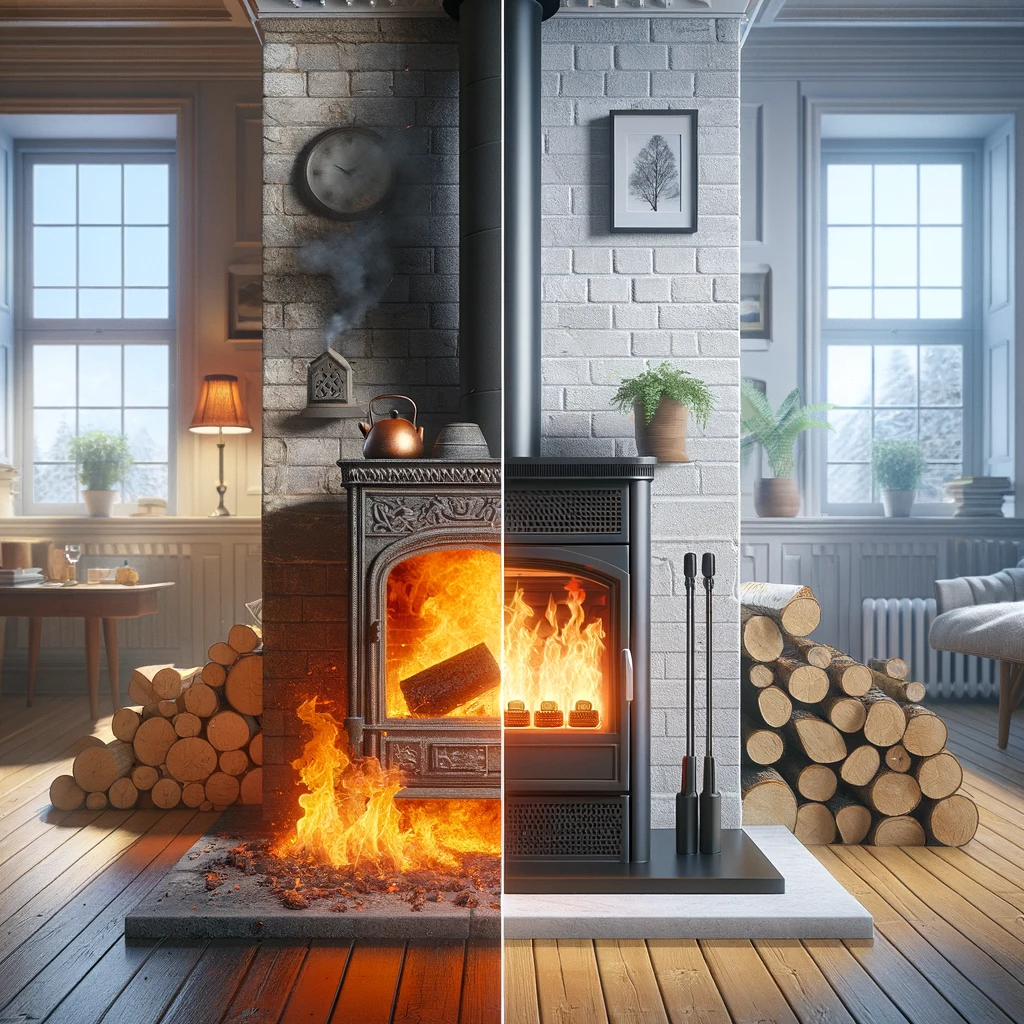
In the chill of winter, a wood-burning fireplace not only warms your home but also adds a cozy ambiance. However, as charming as traditional wood fireplaces are, they come with their set of challenges, including maintenance, efficiency, and environmental concerns. Upgrading your wood-burning fireplace can address these issues, offering enhanced efficiency, convenience, and safety. Let’s explore whether it’s worth making this upgrade.
Enhanced Efficiency
Traditional wood-burning fireplaces are often criticized for their low efficiency. A significant amount of the heat generated escapes through the chimney, leaving less warmth to circulate in your home. Upgrading to a modern wood-burning stove or inserting a fireplace can drastically improve this efficiency. These newer models are designed to burn wood more completely, reducing waste and increasing the amount of heat that stays in your home.
Environmental Considerations
Wood-burning fireplaces emit a considerable amount of particulates and other pollutants, contributing to air quality issues. Upgraded fireplaces and stoves often meet stricter environmental standards, producing fewer emissions. If environmental impact is a concern for you, considering an upgrade or even switching to a gas or electric fireplace could be beneficial.
Maintenance and Convenience
Traditional fireplaces require regular cleaning and maintenance to remove soot and ash and ensure the chimney is clear. Modern wood-burning solutions, while still needing maintenance, often make the process easier and less frequent. For those seeking even greater convenience, gas or electric fireplaces offer the ambiance of a fire without the need for chopping, storing, and burning wood.
Cost vs. Benefit
Upgrading a fireplace is an investment. The initial costs include purchasing the new unit and installation, which can be significant. However, the long-term benefits—such as reduced heating costs, lower environmental impact, and increased home value—can make the investment worthwhile. Evaluate your current heating expenses and how much an efficient fireplace could save you in the long run.
Safety Improvements
Wood-burning fireplaces pose several safety risks, including chimney fires and carbon monoxide poisoning. Upgraded fireplaces and stoves are equipped with better safety features, reducing these risks. Furthermore, a professional installation ensures that your system meets all safety standards and regulations.
Conclusion
Deciding to upgrade your wood-burning fireplace involves weighing the benefits of improved efficiency, convenience, and safety against the initial investment. For many, the upgrade is a worthwhile choice, offering a safer, more efficient, and environmentally friendly heating solution. Before making a decision, consider your household’s specific needs, your budget, and the potential benefits over the long term.
